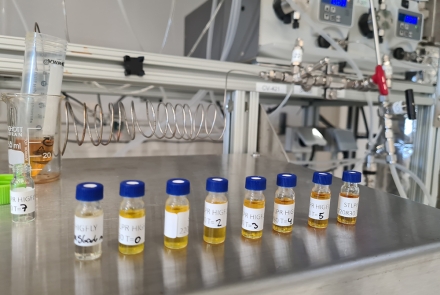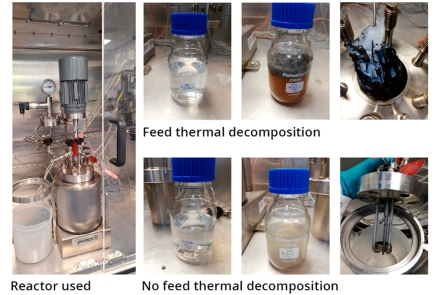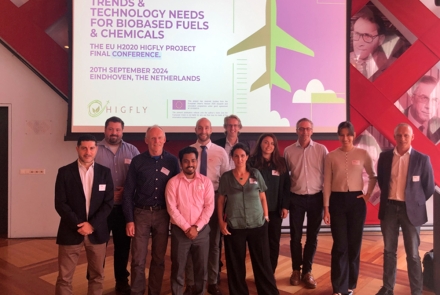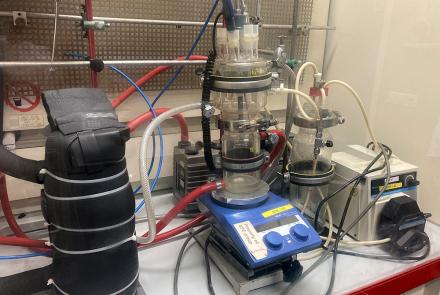Bio-based Deep Eutectic Solvents for the Continuous Synthesis of Furfural and Bio-oxygenates in Bi-phasic Media
One primary goal within the HIGFLY project is to minimise the energy consumption involved in producing sustainable aviation fuel. This objective is pursued by optimising various stages of the process, focusing on enhancing the efficiency of reactor technologies, catalysts, solvents, and membranes.
An overarching ambition is to establish a more circular process by employing solvents derived from natural sources. Specifically, the project explores the utilisation of deep eutectic solvents (DES), which arise when two solids blend to form a liquid at moderate temperatures, maintaining liquidity even at room temperature. This characteristic makes DES suitable for use as solvents.
The selection of solvents holds paramount importance as it significantly influences both operational and capital expenses. Yet, as the complexity of the mixture increases, the challenge intensifies when choosing a solvent that can be easily separated from its solutes. The complexity arises from the tendency of molecules to behave differently when more components are introduced into the mix. Thus, HIGFLY researchers have to strike a balance between solvent selection and molecular behaviour, particularly when dealing with biorefinery streams.
the HIGFLY project integrates quantum chemistry-based tools like COSMO-RS, enabling researchers to scale up lab testing whilst reducing costs and enhancing efficiency. Despite inherent limitations in screening unstudied compounds, these computational approaches, bolstered by extensive chemical datasets, accelerate predictive capabilities.
A HIGFLY report entitled “Bio-based Deep Eutectic Solvents for the Continuous Synthesis of Furfural and Bio-oxygenates in Bi-phasic Media” delves deeper into the application of DES during furfural synthesis from xylose. Through a graph neural network trained for COSMO-RS inputs, novel bio-based DES were identified and evaluated based on furfural partition coefficients and water content, with one particular DES exhibiting superior performance and compatibility with HIGFLY-developed catalysts.

This novel DES showed higher furfural partition coefficients and lower water content, aligning with goals for economic and environmental sustainability. By efficiently extracting furfural from reaction mixtures before by-products form, it aids in preserving catalyst integrity and elevating process efficiency. This research has demonstrated that the targets for partition coefficients and solvent recovery, crucial for downstream processing and sustainability metrics, are achievable. Moreover, experimental validations demonstrated the optimal DES's efficacy in the dehydration of xylose to furfural, showcasing higher selectivity and conversion rates while curbing undesirable by-products.
Moving forward, the HIGFLY project envisions optimising DES-catalyst interactions, exploring varied operating conditions, and further understanding complex solvent-catalyst dynamics, the results from which can not only improve the process efficiency and economic viability of producing sustainable avaiation fuel, but could also have applications in a number of other industrial processes and help EU industries move a step closer to more sustainable practices.







